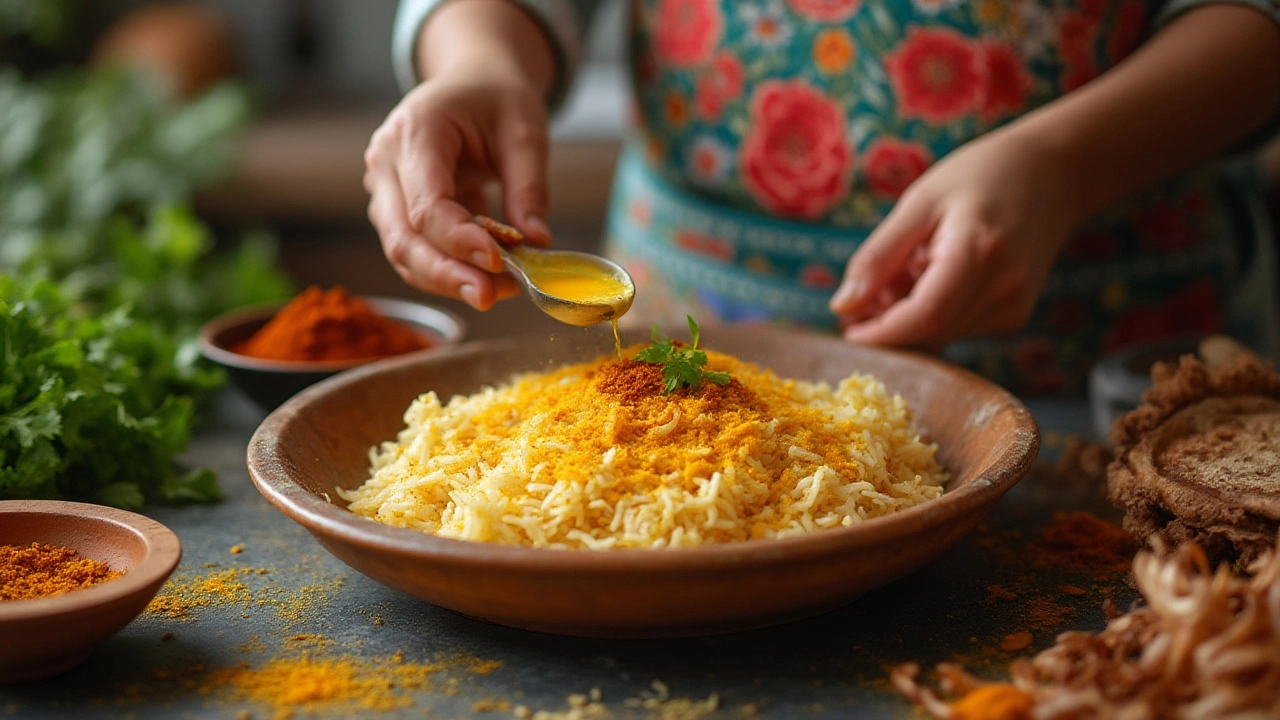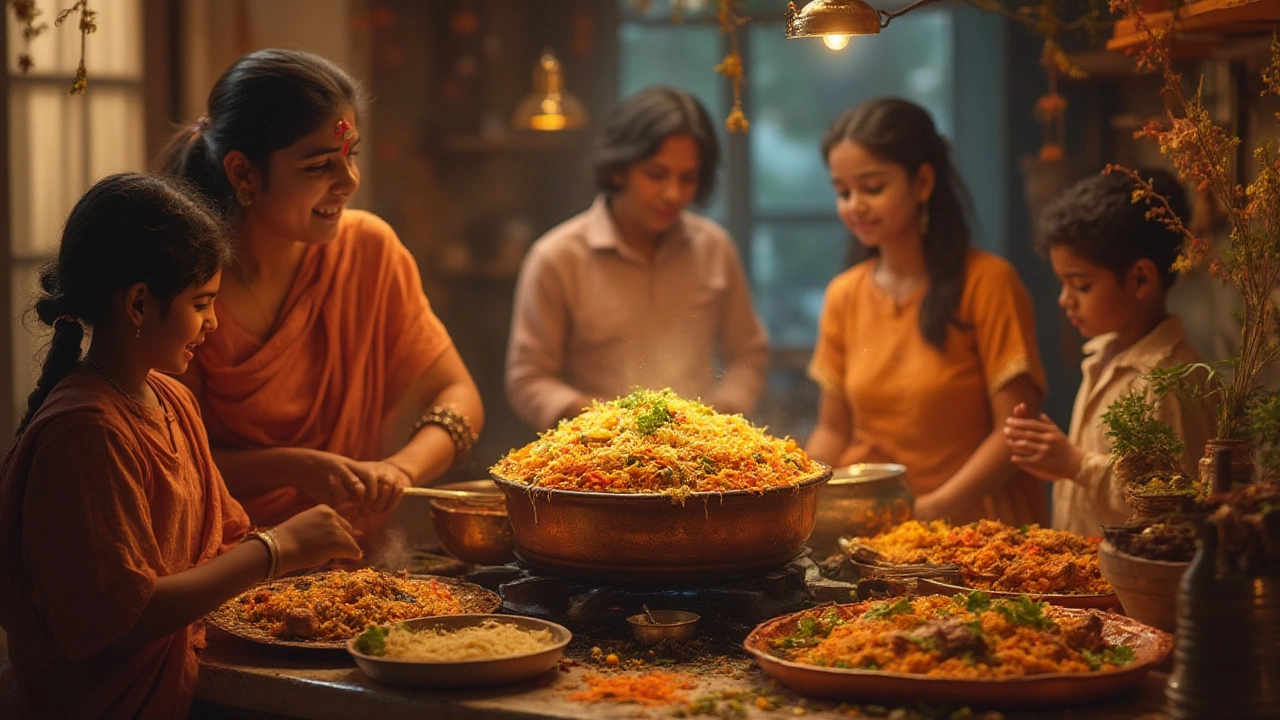Hands up if you've ever felt slightly intimidated by the word "biryani." Smells are incredible, the flavors rich, and those fluffy grains of rice and perfectly spiced pieces of meat look like something only a professional chef could pull off. But the question remains: is biryani actually hard to cook, or is it just shrouded in culinary mystery? There are countless stories about people who were too scared to even try, worried about burning the rice, drying out the meat, or just making a gigantic, tasteless mess. Sometimes, watching those YouTube recipe videos or scrolling through food blogs only makes it seem more overwhelming—marinating, layering, sealing, "dum" cooking, fried onions, homemade spice mixes… is it worth the effort? Spoiler: you may be surprised by how doable (and even relaxing) biryani can be, especially when you know a few insider tricks.
Biryani’s Reputation: Legend vs. Reality
Biryani didn’t get its fame by being boring. It’s one of South Asia's most iconic, complicated-seeming dishes—and for good reason. The layered rice and meat approach comes from centuries-old Persian roots, which traveled to India with the Mughals. Hyderabad, Kolkata, Lucknow; each city fiercely claims their version rules above all. But this legendary status has led to a bit of a myth: that only aunties with iron patience or restaurant chefs with secret techniques can make a good biryani. Street talk says it takes hours (sometimes days), countless spices, and a knack for layering that can’t be taught. Is it justified? Well, biryani is definitely a project food. There are dishes you toss together after work, and then there’s biryani, which asks you to plan. Think homemade lasagne or paella—it’s not impossible, just not a “let’s wing it at 7pm” meal.
Here’s the twist nobody tells you: biryani’s main steps are actually straightforward once you break them down. What trips most home cooks up is trying to follow complicated, multi-generational, handwritten recipes—or assuming missing a single step will lead to disaster. Don’t get me wrong, attention to detail helps. But the real magic comes from understanding a few essential concepts: get your rice right, don’t under-season, and resist the urge to poke at it too much while it cooks. That’s why so many first-timers get scared off; they think every step is a trapdoor.
Biryani can be as easy or as complex as you want it to be. Purists may stress about layering order, dum (steam) technique, and that precisely “right” spice mix. But in real kitchens from Kerala to Karachi, family cooks bend the rules all the time. They batch-cook onions and stash them in the freezer, eyeball spice measurements, and sometimes even use pressure cookers or rice cookers when they’re in a rush. Here in Auckland, too, I’ve seen Indian and Pakistani families improvise, adapting to local ingredients and even tossing everything into a single pot when life gets complicated. So the answer? Biryani is only as hard as you make it.
The Steps: Where Things Get Tricky (and How to Make Things Easier)
At its heart, biryani is a dish of three elements: marinated protein (chicken, lamb, seafood, or even paneer), half-cooked, aromatic rice, and fried onions. Everything else—nuts, dried fruit, saffron, rosewater, homemade spice blends—is optional icing. Let’s break down the stumbling blocks.
- Rice. The biggest fear? Mushy biryani. To nail fluffy, long-grain basmati, soak it, then parboil it till about 70% cooked—a grain should break with a tiny bite inside. Salt the water generously, like you would for pasta. And don't forget to drain well. Experienced cooks often cool the rice on a tray when prepping large batches so the grains dry off and stay separate.
- The Protein. Whether you’re marinating chicken or prepping vegetables, the key is to infuse flavours before cooking. Yogurt and lemon juice tenderise. Let it sit for at least 40 minutes (overnight if you’re serious). Some recipes brown the meat first. Just know that undercooked meat will ruin everything, and overcooked means tough, sad chicken. If you’re using lamb or beef, precook until almost tender or risk a raw chewy layer.
- Onions. Frying onions is where time goes, but there’s no way around it for proper flavor. Slice thin, fry in lots of oil till deep brown but not burnt. Resist crowding the pan, or you’ll end up steaming instead of caramelizing. You can also batch-make onions and freeze portions; I swear every auntie in Sandringham has a stash of these magic onions for emergencies.
- Layering and Cooking. Classic biryani is a symphony of layers. Meat goes at the bottom, followed by rice, then crispy onions, and a sprinkle of mint or coriander. Saffron or yellow food dye (mixed with warm milk), nuts, or dried fruit get tossed on top as a treat. The final “dum” cooks it all together—seal the pot with dough or a tight lid, and gently steam on very low heat for up to 25 minutes. This is the part that feels most mystical, but honestly, the hardest part is resisting the urge to poke and peek. It’s the trapped steam that does the work.
So what’s the hack for busy kitchens? Par-cook ingredients separately. If you’re pressed for time, use a heavy pot with a tight-fitting lid, or even a rice cooker with a biryani setting. Keep things simple: store-bought biryani masala saves time, and you can swap dried mint for fresh if needed. If it all sounds like too much, try a "shortcut" one-pot biryani recipe—a cheat, yes, but you’ll still get those familiar flavors without the stress of perfect layering.

Why People Think It’s Hard—and How to Outsmart the Stress
The secret nobody shares? Most stories about "failed biryani" come from people who tried to bite off more than they could chew for a festival dinner and didn’t practice first. The fear is real, though—biryani brings up visions of burnt bases, lifeless grains, and awkward silences at big family tables. It’s also a dish loaded with tradition, and sometimes there’s pressure to make it The Right Way. Ever noticed how everybody’s mother in law seems to have a different non-negotiable “secret ingredient” or method? That’s cultural pride talking, not universal law.
A Kiwi study on immigrant food traditions (I remember stumbling on this piece in the New Zealand Journal of Social Sciences) showed that most families blend shortcuts with tradition. More experienced home cooks make onions in bulk, skip homemade garam masala, or even use frozen marinated meat. People adapt to their kitchens, their schedules, and their taste buds. Years ago, a Bangladeshi friend here in Auckland said her family uses an instant pot for biryani because, after a long day at work, nobody cares about dough seals and slow steaming—all they want is dinner on the table.
The real challenge is timing. You need to juggle soaking, frying, marinating, and assembling in the correct order. If you lay everything out and do a bit of prep the night before, you’ll avoid the "always waiting on onions" curse. Also, practice is your friend. My first go ended in rice that was both burnt on the bottom and crunchy on top—or as a friend kindly put it, “experimental.” By the fourth round, I was layering with one hand, chatting on the phone, and it just worked.
- Tip: prep onions ahead. Spend an evening making a giant batch. They freeze brilliantly and come to the rescue for biryani, korma, and even burgers.
- Tip: go easy on saffron. Too much and you’ll taste soap, not luxury; just a few strands (soaked in hot milk) does the trick.
- Tip: don’t rush the rice. Nineteen minutes is often the magic number for 70% cooked basmati, but always taste-test.
- Tip: trust your nose. When steam starts to smell incredible, it’s usually ready.
- Tip: steam, don’t boil at the finish. Too much heat just kills texture.
Still worried? Start with a simpler, one-pot chicken biryani or even try a vegetarian version. Skipping tricky layers helps build confidence without sacrificing flavor. As you get comfortable, experiment with fancier touches like birista (fried onions), saffron or rose water, or swapping in your favorite veggies or protein.
Batch Cooking, Quick Fixes, and Local Twists You Should Try
Cooks everywhere are finding little ways to make biryani less stressful and more weeknight-friendly. In Auckland, you’ll see things like “biryani meal preps” at local Indian shops, or collaborations at food trucks where cooks play with fusion toppings (I’m obsessed with the Bombay biryani pie from a certain cart on Karangahape Road). There are also frozen biryani bases—rice, meat, and masala all in one microwave box. Does it beat homemade? Not quite, but it’s a lifesaver after a long workday.
Want to throw a party but don’t want to get stuck in the kitchen? Make “deconstructed biryani bowls.” Cook all the base elements—flavored rice, marinated roast chicken or paneer, fried onions, chutneys—and let people layer their own. Not only does it keep things stress-free, but it also tailors spice and toppings to everyone’s tastes. Gluten-free or dairy-free eaters? Just adjust what goes on their plate without fuss.
Looking to batch-cook for later? Freeze cooked, cooled biryani in single-serve containers. When reheating, sprinkle a little water over the top and cover with foil in the oven for best results. Some Auckland chefs even say leftover biryani tastes better the next day after flavors meld—almost like a spiced risotto, New Zealand style.
- Time saver: use basmati sold as “ready-boil.” It doesn’t clump and can handle a bit of overcooking.
- Low stress: try an electric multicooker. Most have biryani settings, and while purists might cringe, the flavor is still compelling.
- Kiwi hack: swap in seasonal veggies. Pumpkins, kumara, or even green peas blend well when you run out of traditional ingredients.
- Biryani masala shortcut: buy it pre-mixed. Yes, you’ll lose the "family recipe" touch, but it gets dinner on the table.
- Go gentle on layering. Even if you only do two layers—meat on the bottom, rice and onions on top—it’s still authentic in spirit.
And one wild fact? The world’s biggest biryani ever cooked was prepared in Hyderabad in 2018, clocking in at over 12,000 kilograms, with more than a hundred people stirring. But even at home, one big pot of biryani has an outsized impact—people gather around, plates fill up, and there’s always some left for breakfast. Not many recipes can claim that kind of magic.
So don’t let biryani’s legendary reputation hold you back. At its core, it’s rice, marinated protein, a few spices, and the knowledge that nothing brings folks together quite like that first steamy, fragrant spoonful. Even a so-called failed biryani is better than none at all. The only true mistake? Not giving it a go.
